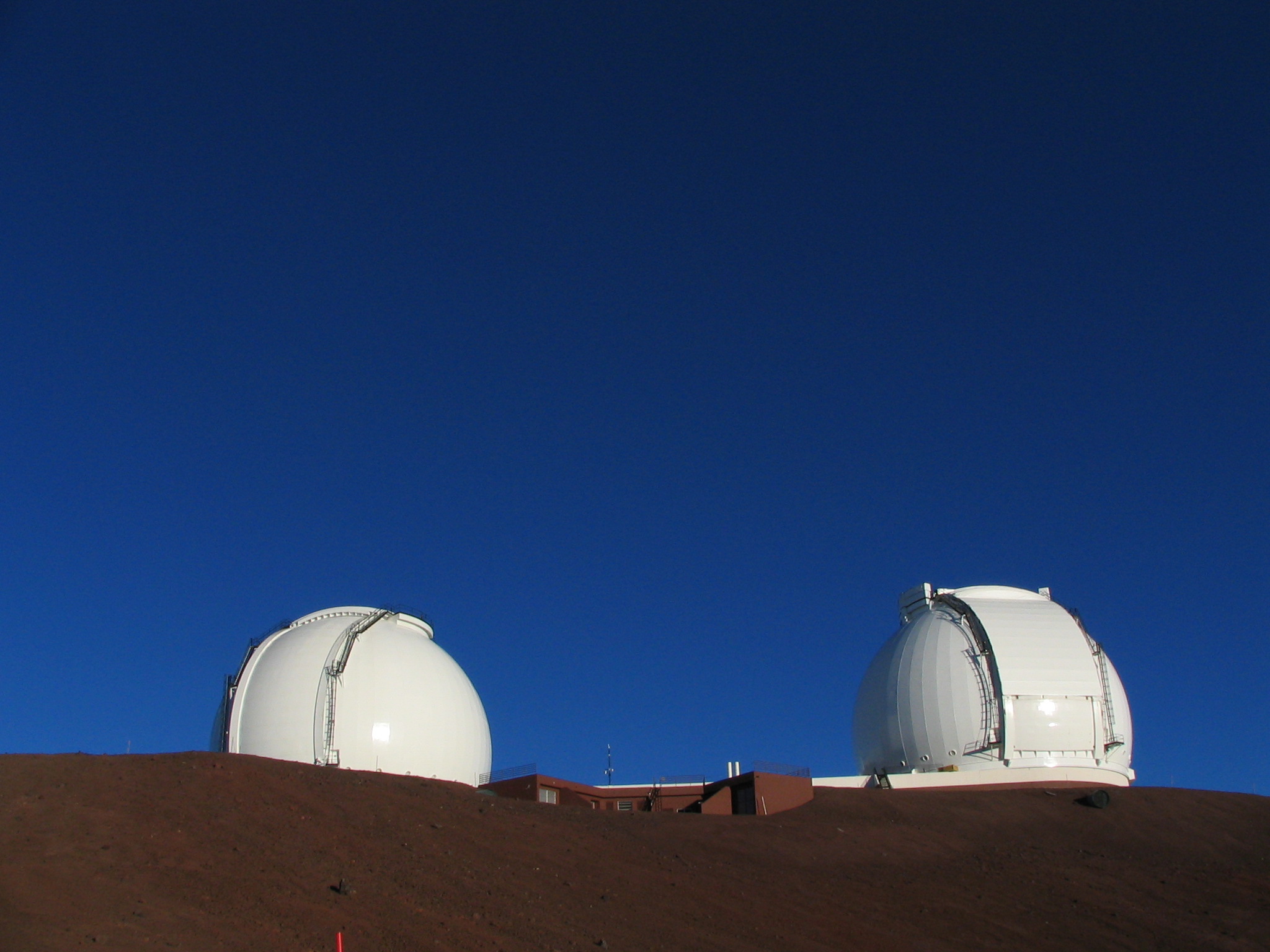| dome design |
|
Telescopes are packed with sensitive and expensive optical and electronic components. The purpose of a dome is to protect them from the environment, i.e. sunlight, humidity, rain, snow, dust and wind.
As well as protecting the telescope, a dome should also:
There are many different varieties of domes, so this discussion shall be restricted to the three main types, which shall be referred to as: the clamshell design, the classical design, and the box (or can) design.
clamshell domes
The clamshell design is generally spherical in shape and uses two sets of interleaved shutters, as shown in figure 52. The great advantage of this design is that the entire sky is visible when the dome is open. This means that there is no need for dome rotation and tracking, and temperature differences between the inside and outside of the dome are almost instantaneously eliminated on opening. The disadvantages of this design are that it does not protect the telescope from wind-shake, which can blur astronomical images, or stray light, which can increase the background noise level. It is also impractical to house telescopes much larger than ~2 m in diameter in a clamshell dome as the shutters would become too heavy to maneouvre into position.
| figure 52: |
Clamshell domes. Top left: the 2 m Liverpool Telescope (LT)
on La Palma, with the
dome closed. Top right: the LT partially opened, exposing the telescope within.
Bottom left: a mosaic showing how the two sets of shutters open on a smaller clamshell dome.
Bottom right: the open clamshell dome of pt5m, the Durham-Sheffield 0.5m robotic telescope on La Palma.
|




classical domes
The classical dome design dominates the skyline at most astronomical observatories. Like the clamshell, the classical dome is spherical in shape, which ensures minimal wind resistance and allows rain, snow and ice to run off, preventing it from collecting in large quantities on the outer surface. Unlike the clamshell, the classical design also allows a crane to be mounted on the inside of the roof, which is very useful for maintenance work (e.g. mirror re-aluminising) and instrument changes. A shutter is required in order to allow the telescope to view the sky: this can either be of the wing variety or the over-the-top variety - see figure 53. The latter is preferred due to its lower wind resistance when open, but this comes at an increased complexity and cost.
The great advantage of the classical dome design over the clamshell is the protection it affords from wind shake and stray light, and the fact that domes up to ~10 m in diameter can be housed for an affordable price. There are, however, two main disadvantages. First, it is more difficult to equalise the internal and external temperatures when the dome is opened, resulting in poor dome seeing. This problem can be alleviated to some extent with the installation of air-conditioning to keep the interior of the dome at the same temperature as the exterior, and the use of large fans and ventilation slots to rapidly flush the dome with exterior air when opening. Second, the entire dome must be able to rotate and track the motion of the telescope, significantly increasing the cost and complexity of the structure.
| figure 53: |
Classical domes. Left: the twin 10 m
Keck Telescopes on
Hawaii, with closed over-the-top shutters. Centre: the 3.8 m
UK
Infrared Telescope (UKIRT) on Hawaii, showing open wing shutters
and ventilation windows. Right: the 8.1 m
Gemini
Telescope in Hawaii, with open ventilation slots and over-the-top
shutter. Notice the lower shutter, which can also be used as a wind
shield.
|



box domes
The curved components of the classical dome design are both complex and expensive to produce, which means that many (but not all) of the latest telescopes, including the next generation of extremely large (>10 m) telescopes, adopt a more box-like (or can-like) design. The use of straight sections of steel makes the design simpler and cheaper to manufacture. The disadvantage of this design, however, is its increased wind resistance and the potential for snow and ice to collect on the flat roof. Hybrid systems intermediate between the box and classical designs are also in existence - see figure 54.
| figure 54: |
Box domes. Left: the four 8.2 m
Very Large Telescopes (VLT) in Chile, with
the domes closed. Centre: the VLT with the domes opened - note the
innovative wing shutter that does not protrude when opened. Right:
the twin 6.5 m
Magellan Telescopes in Chile, a hybrid
design which uses straight girders/panels but maintains the overall classical
dome shape.
|


